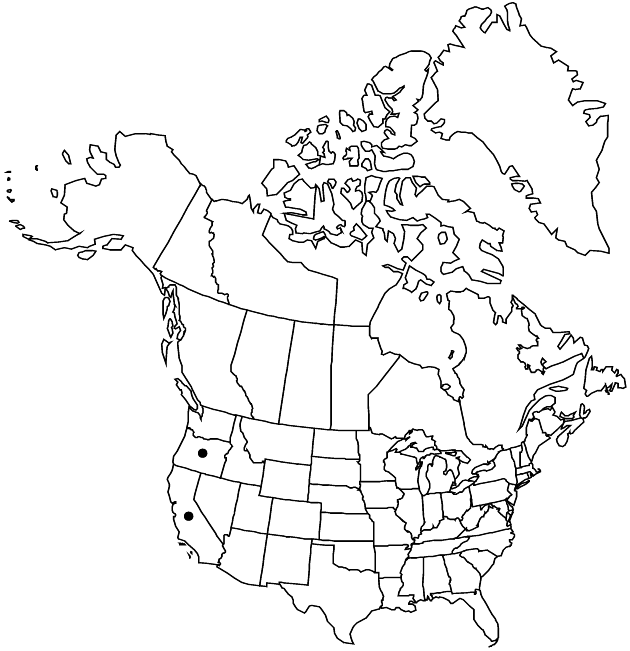Stephanomeria lactucina
Proc. Amer. Acad. Arts 6: 552. 1865.
Perennials, 10–60 cm (rhizomes slender). Stems single, branches erect or ascending (from near bases), glabrous or sparsely puberulent. Leaves green at flowering; blades linear-lanceolate, 3–8 cm, margins entire or toothed (teeth remote, faces glabrous or sparsely puberulent). Heads borne singly along branches. Peduncles 10–50 mm (bracteate). Calyculi of (4–7) appressed bractlets (unequal, lengths to 1/2 phyllaries). Involucres 12–14 mm (phyllaries 8–12, glabrous). Florets (7–)8–10. Cypselae light tan, 5–6 mm, faces smooth, grooved; pappi of 25–30, light tan bristles (sometimes connate in groups of 5–6+, persistent), wholly plumose. 2n = 16.
Phenology: Flowering Jul–Aug.
Habitat: Sandy soils in dry, open yellow pine and red fir forests
Elevation: 1100–2300 m
Discussion
Stephanomeria lactucina grows in the Cascade Mountains, Sierra Nevada, and North Coast Ranges. It rarely sets seed. The absence of seed is associated with reduced pollen viability, first reported by A. S. Tomb et al. (1978), who noted that “plants [from Siskiyou County, California] were seed-sterile and produced only 45% stainable pollen.” The ability of pollen to take up acetocarmine dye is a measure of their viability and, consequently, the fertility of the plant. I examined pollen from five randomly selected specimens collected from Oregon and California and found from 2% to 98% stainable pollen, with a mean of 47%. Pollen stainability and seed set have not been studied systematically in this species. Because these traits directly influence fitness and population persistence, further study would likely be rewarding.
Selected References
None.
